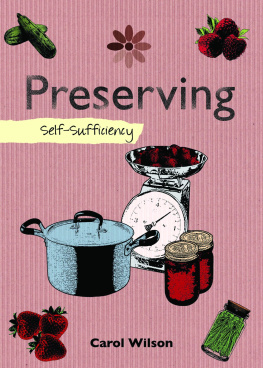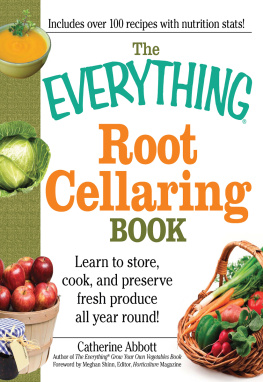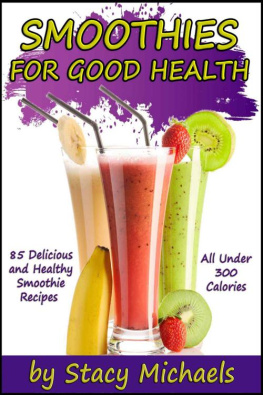


50 BEST
PLANTS ON
THE PLANET
The Most Nutrient-Dense Fruits and
Vegetables, in 150 Delicious Recipes
Cathy Thomas
Foreword by Cheryl Forberg, RD
Photographs by Angie Cao

Text copyright 2013 by Melissas /World Variety Produce, Inc.
Photographs copyright 2013 by ANGIE CAO .
All rights reserved. No part of this book may be reproduced in any form without written permission from the publisher.
Library of Congress Cataloging-in-Publication Data available.
ISBN 978-1-4521-0284-9 (hc)
ISBN 978-1-4521-0283-2 (pbk)
ISBN 978-1-4521-2769-9 (ebook)
Designed by CELERY DESIGN COLLABORATIVE
Typesetting by HELEN LEE
Prop styling by CHRISTINE WOLHEIM
Food styling by FANNY PAN
The photographer wishes to thank her excellent stylists, CHRISTINE & FANNY , as well as CATHRYN LOVECRAFT , TREVOR ADAMS , and KIZZY VATCHARAKOMONPHAN .
Alouette is a registered trademark of Lon Hatot SA; Baby Dutch Yellow Potatoes is a registered trademark of Melissas/World Variety Produce, Inc.; Grand Marnier is a registered trademark of Societe des Produits Marinier Lapostolle SA; Japonica is a registered trademark of Wehah Farm, Inc. DBA Lundberg Family Farms; Microplane is a registered trademark of Grace Manufacturing Inc.; Sriracha is a registered trademark of V. Thai Food Product Co., Ltd.; Twitter is a registered trademark of Twitter, Inc.; Wehani is a registered trademark of Wehah Farm, Inc. DBA Lundberg Family Farms.
CHRONICLE BOOKS LLC
Second Street
San Francisco, California 94107
www.chroniclebooks.com
Acknowledgments
How lucky I am to have had such a great team cheering me on. Books like this happen with the help and generosity of many people.
Enormous thanks go to Sharon and Joe Hernandez, owners of Melissas/World Variety Produce, for giving me the opportunity to write this book. These produce pioneers founded the company in 1984 . Their family-run business has become the nations largest distributor of specialty and organic fruits and vegetables. The Melissas brand is named after Sharon and Joes daughter, Melissa, whoalong with her husband, Aarontakes an active role in the company.
Food writers from coast to coast rely on the information garnered from produce guru Robert Schueller, Melissas director of public relations. He is a walking encyclopedia of produce knowledge. His talent and enthusiasm are greatly appreciated. Thanks go to Debra Cohen, Melissas director of special projects, for her steadfast fact checking.
I am extremely grateful to nutrition experts Cheryl Forberg, RD, and David Feder, RD. Cheryl, a former nutritionist for NBCs The Biggest Loser , wrote the books foreword and painstakingly did the nutritional analyses of the recipes. David Feder, a food writer and nutrition scientist, contributed the nutritional information related to each topic.
Heartfelt thanks to chef Ida Rodriguez, executive chef of Melissas corporate kitchen, along with her very talented team, chef/kitchen director Tom Fraker and chef Raquel Perez. Chef Tom and Chef Raquel tested each and every recipe in the book.
Special thanks to editorial director Bill LeBlond and associate editor Sarah Billingsley; designer Alice Chau; photographer Angie Cao; and the rest of the editing, production, marketing, and publicity team at Chronicle Books.
Finally, of course, I would like to thank my children and my husband, Phil McCullough, for their patience and love, as well as culinarian Tillie Clements, who cooked up my first newspaper food-writing gig. Thank you to Franoise Thomas, who gave me my initial lessons in French cuisine and perseverance.
Infinite gratitude to my late parents, Harriett and Loren Young, who kept our family table filled with fresh fruits and vegetables seven days a week.
CATHY THOMAS
Contents
Foreword
by CHERYL FORBERG, RD
James Beard Awardwinning chef, former nutritionist
for The Biggest Loser , and author of Flavor First
Go online or pick up a newspaper and youre almost guaranteed to read bad news about our health. In recent years, increasingly frequent headlines have tracked our nations downward spiralas evidenced by skyrocketing child and adult obesity rates, an uptick in type diabetes, and a drop in the number of home-cooked meals we consume.
Nowhere is the reality of these statistics clearer to me than on the set of NBCs The Biggest Loser . Since the first episode aired in 2004 , I served as the shows nutritionist and co-wrote the eating plan that produced dramatic weight-loss results for contestants and viewers alike.
The contestants who arrive at The Ranch (the fitness and residential facility where they begin their weight-loss journey) are morbidly obese and often face the prospect of life- threatening conditions, such as heart disease and diabetes. Almost invariably, their pre-show diets are full of empty caloriesthat is, foods lacking in nutrient value but packing plenty of excess fat and sugar calories. Soft drinks, drive-through meals, and processed foods are usually staples.
Naturally, as part of the guidance I gave Biggest Loser contestants, I urged them to eliminate these unhealthy foods from their diets. But the massive lifestyle changes they undertake wouldnt be sustainable if they only involved deprivation. Instead, one of the cornerstones of the Biggest Loser eating plan is to increasethats right, increase!consumption of nutritious, high-quality foods. And thats where fresh fruits and vegetables come in.
I explained to contestants that fresh produce is the ultimate high-quality food, because most fruits and vegetables are:
LOW IN CALORIES Fruits and vegetables typically have high water content, so eating even a small quantity delivers satisfying bulk with just a few calories.
HIGH IN FIBER Many fruits and vegetables are loaded with dietary fiber, which promotes healthy digestion and nutrient absorption and helps lower the risk of diabetes, heart disease, and possibly colorectal cancer.
RICH IN ANTIOXIDANTS Antioxidants protect your body against inflammation, diabetes, heart disease, cancer, and other ailments. Because theyre rich in vitamins and plant nutrients called phytochemicals, fruits and vegetables pack a strong antioxidant punch.
As contestants on The Biggest Loser experiment with flavorful new combinations of produce and switch to a clean eating lifestyle, they reap the rewards on the scale, at the doctors office, and with increased overall energy to fuel those killer workouts the show features. They realize that its not just about the quantity of calories they consume, but the qualityboth in terms of flavor and nutrient composition. Theyre not just counting calories; theyre making every calorie count.
Thats why Im so excited about this book. Best Plants on the Planet features fifty foods that score high for nutrition densitya measurement that compares the nutrient content of food to its calories. In short, while Best Plants on the Planet isnt a weight-loss book, its based on the same principles as the Biggest Loser plan, which are making every calorie count, and making the experience delicious, to boot!
Next page













